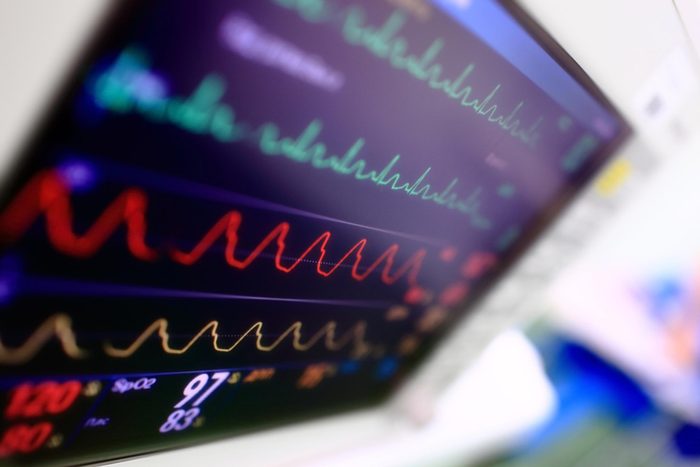
Killer carbs
Some people eat too many carbs, and these are the signs you are one of them. If you overindulge on high carb foods, limiting those carbs can be a life-saver, literally. In one 2017 study, people who ate a lot of carbs (more than 60 percent of their daily calories) had a nearly 30 percent greater risk of dying during a seven-plus year period than people eating a low-carb diet.
Here’s how the researchers figured this out: In their Prospective Urban Rural Epidemiology (PURE) study, they followed people aged 35 to 70 from 18 countries for 7.4 years on average. Participants answered questions about the foods they ate using a standard questionnaire. Then researchers categorized them into groups based on their intake of carbs, fats, and protein.
During the study period, 5,796 participants died and 4,784 had heart attacks or strokes. Researchers found that those who consumed the greatest amount of carbs were more likely to die, when compared with their counterparts who consumed the least. Fat, however, seemed protective. People who ate high-fat diets (about 35 percent of daily energy intake) had a 23 percent lower risk of mortality. They also had an 18 percent lower risk of stroke compared to low intake group (11 percent energy).

Carb link to heart disease
The study was not designed to determine why carbs may increase risk of dying. But some older research does provide some clues. A higher carb intake may increase dangerous blood fats known as triglycerides and low-density lipoprotein or “bad” cholesterol, explains study author Mashid Dehghan, PhD, an Investigator in the Nutrition Epidemiology program at the Population Health Research Institute and Senior Research Associate in the Department of Medicine at McMaster University in Hamilton, Ontario, Canada. “It may also increase apoB/apoA ratios,” she says, and “ApoB/ApoA ratio has shown to be strong predictor of heart disease.” In fact, loading up on carbs is among the worst eating habits for people with high cholesterol.
Fat was once considered diet saboteur No. 1. Now carbs—especially white, processed, simple ones— holds this title. In fact, a study published in the journal Cell Metabolism also raise hopes that low-carb diets, if followed over time, improve the odds of living longer and can also boost memory. (The research was on mice, but they do add to growing body of evidence).
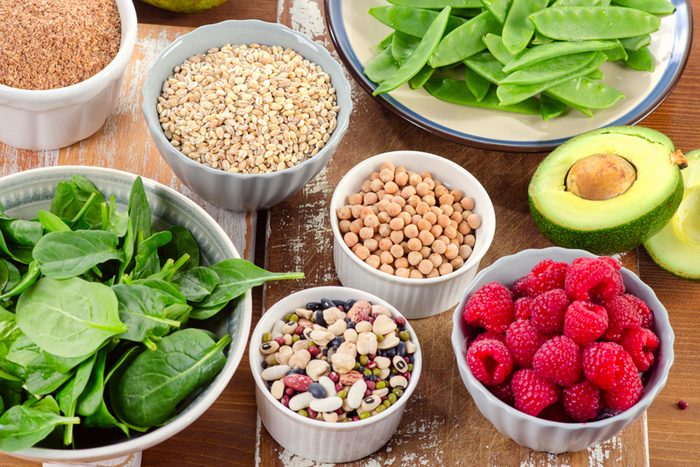
No carb is not the answer
Before you start trashing all of the carbs in your pantry for a low-carb diet, remember Dr. Deghan’s caveat: “Our study does not support a very low carbohydrate intake (e.g. below 50 percent of caloric intake). Moderate intakes (e.g. 50–55 percent of caloric intake) are likely to be more appropriate than either very high or very low carbohydrate intakes,” she says. The Dietary Guidelines for Americans recommends that carbohydrates make up 45 percent to 65 percent of your total daily calories. This means that between 900 and 1,300 calories should be from carbs, assuming you eat a 2,000 calories a day.
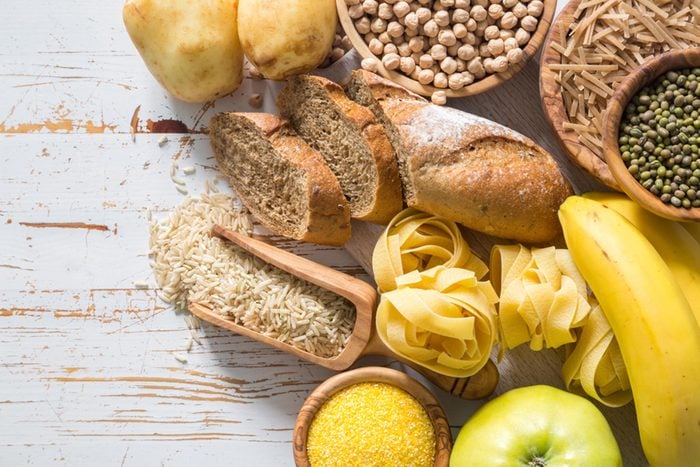
Good carbs and bad carbs
Once upon a time, we thought all fats were bad and should be avoided—just one of the many myths about fat you need to stop believing. But research eventually showed that some fats such as omega-3’s are super healthy. Trans fats, on the other hand, are anything but. We’ll likely see the same sort of a shakeout with carbs. Dr. Dehghan and colleagues did not parse out the type of carbs that study participants ate. But we already know that some carbs (think whole foods including vegetables, whole fruit, legumes, potatoes, and whole grains) are healthy. Others (think refined carbs such as sugar-sweetened beverages, juices, pastries, white bread, white pasta, and white rice) are not, and should be avoided or at least limited. Diabetics, these are the healthy carbs nutritionists want you to eat.
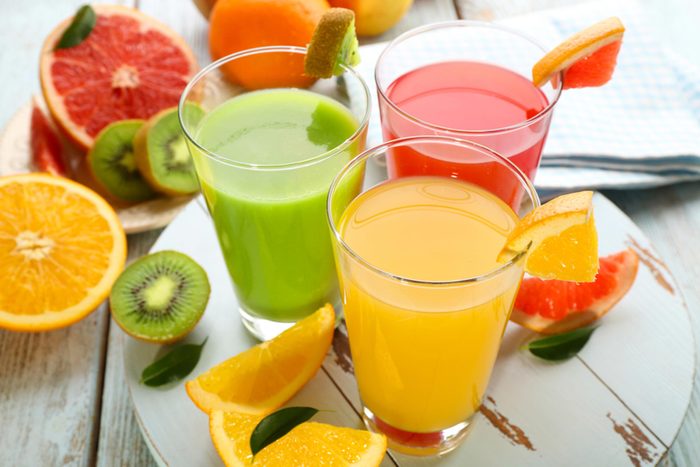
Carb to avoid: juice
Yes, juicing is on trend. Many a wellness guru touts its health benefits and juice bars are popping up everywhere. But fruit juices are examples of simple carbohydrates to be avoided, says Sharon Zarabi RD, CDN, CPT , Program Director of Bariatric Surgery and a Registered Dietitian Nutritionist/Fitness Trainer at Lenox Hill Hospital in New York City. “Blending uses the whole fruit including the fiber content, but fruit juice has no fiber.” It’s the fiber that separates good carbs from killer carbs. “Simple sugars like those in juice and some smoothies spike blood sugar. What goes high usually goes low and will leave you feeling hungry in the short term as opposed to when you consume fiber-rich foods and drinks,” she says. Skip the juice and drink water or another low-calorie unsweetened beverage. When you eat—or don’t eat—carbs matters too.
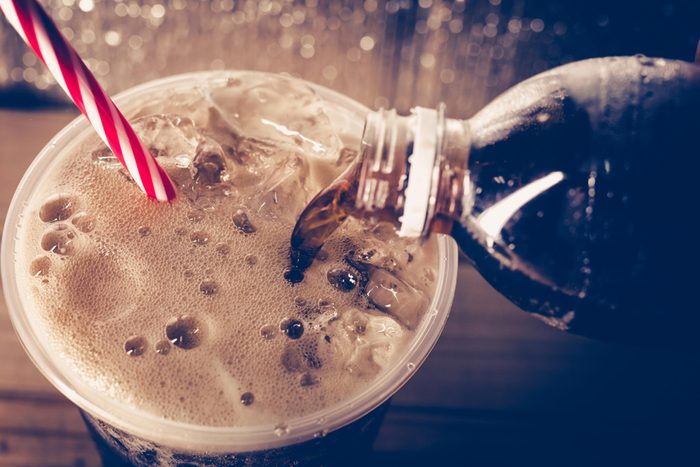
Carb to avoid: sweetened soda and coffee drinks
Also high on the list of dangerous carbs are sweetened sodas, Zarabi says. A can of Coke has 39 grams of carbs, not to mention at least 150 empty calories. Flavored lattes are also rank high in blood-sugar spiking carbs. And these beverages, soda especially, have been linked to skyrocketing rates of obesity. If you need more convincing, here are 10 more reasons to never drink soda again.
“Evidence is growing that overconsumption of simple sugars from added sugars—white sugar, agave, maple syrup, etc.—is representative of a more calorie-rich eating plan and likely an eating plan that fails to provide satiety at a lower calorie level, leading to overconsumption,” says Connie Diekman M.Ed., RD, LD, FADA, Director of University Nutrition at Washington University in St. Louis past president of the American Dietetic Association (ADA), now the Academy of Nutrition and Dietetics.
And we know that limiting carbs helps with weight loss. Low-carb diets lead to weight loss by inducing something called ketosis. Put another way: If you reign in the carbs, your body turns to fat for fuel and you shred weight. (When stored fat gets broken down, it morphs into molecules called ketones, thus ketosis.) Here’s what it’s really like to follow the ketogenic diet.
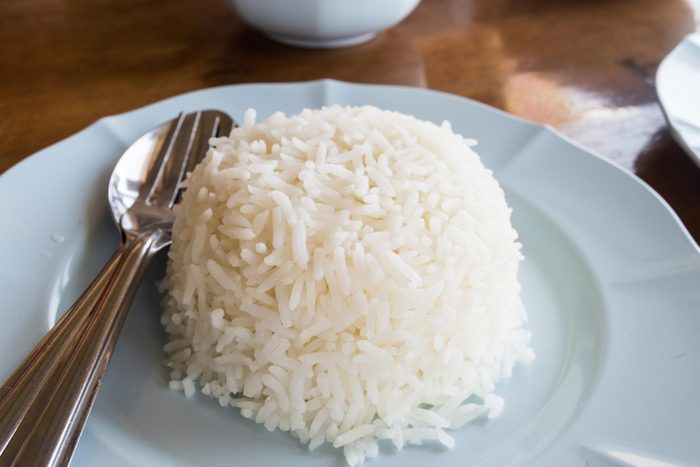
Carbs to avoid: white rice, bread, and pasta
These foods are examples of simple carbohydrates that give carbs a bad name, Zarabi says. “All carbs are not created equal.” White processed carbs are low in fiber and tend to spike blood sugar. (Heads up: These 8 sneaky things can also raise blood sugar levels.) Her advice: “Read food labels and make sure the fiber content is greater than 3 grams per serving.”
Brown rice, wild rice, and quinoa are healthier alternatives to white rice. Whole grain pastas and breads are also smart substitutions. Wraps—especially whole wheat or veggie-flavored ones—may seem like a heathier choice than a sandwich on a roll, but the darker colors may be food coloring rather than whole grains or veggies. “Instead, use collard greens or kale leaves as a wrap or make a salad,” Zarabi suggests.
Plain bagels are high carb foods too, says Boston-based nutritionist Dana Greene, RD. And the bigger the bagel, the worse the offense, she says. Depending on the size, a bagel can have close to 500 calories and 50 grams of carbohydrates. Opt for one of these easy healthy breakfasts instead.
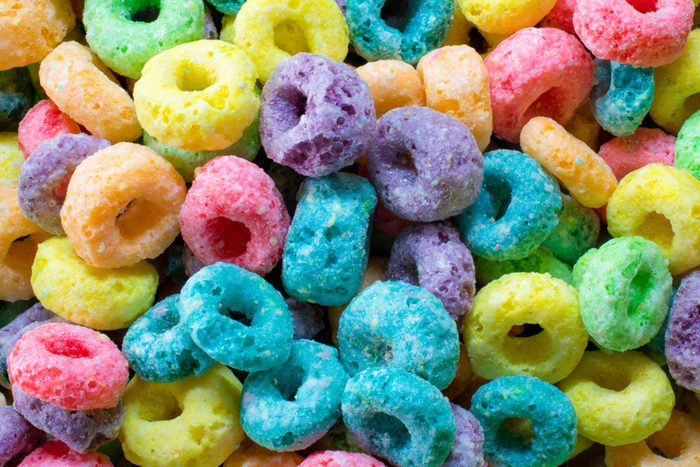
Carb to avoid: breakfast cereals
Speaking of breakfast, even some of the healthier-sounding cereals in the aisle may be high carb foods loaded with simple sugars and low in nutritional value, Zarabi says. Check the fiber content and make sure it is above 3 grams per serving. And choose single ingredient cereals for breakfast such as oatmeal when and where you can. Be on the lookout for these sneaky ways “healthy” cereal could be making you fat.
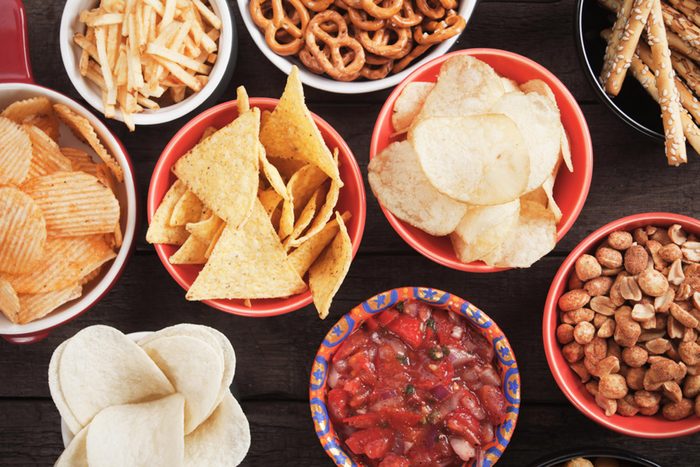
Carbs to avoid: pretzels, popcorns, and chips
Anything that melts in your mouth is a source of empty calories, as there is no substance left to keep your stomach full and sated. So if you’re craving snack foods, choose healthy snacks you won’t feel guilty about eating. “Carbohydrates from vegetables, fruits, and grains should be a part of a healthful eating plan in that they provide us with the energy we need, the fiber we need, and overall nutrition,” Diekman says. “An eating plan built around whole grains, vegetables, and fruits is more nutrient rich, provides a greater feeling of fullness, and has been found to promote health.” Instead of chips, try roasted chickpeas or edamame to get the crunch you crave without the carbs, like The Good Bean Sea Salt Flavor Crispy Crunchy Chickpeas.
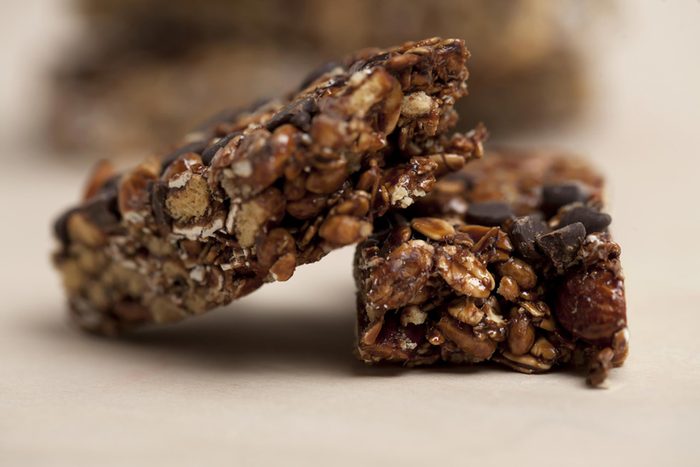
Carb to avoid: granola bars
Sure, they sound healthy and are easy to eat on the go. But many snack or granola bars are high in sugar and simple carbs. (Granola is actually on the list of foods we should steer clear of when we want to lose weight.) Instead, “look for bars that are high in protein, healthy fats, and fiber with fewer than eight grams of sugar and no added sugars,” Greene says. “The fewer the ingredients the better and they should always come from whole foods.” Some healthy choices include KIND Pressed Mango Apple Chia Bars, any of the Rx bars or all Health Warrior Chia bars.
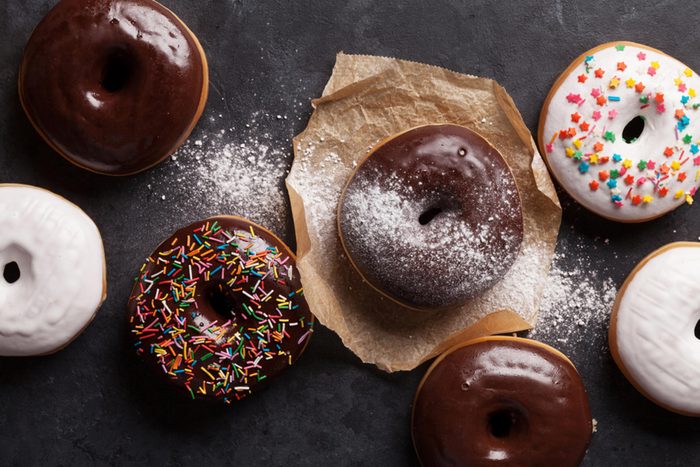
Carbs to avoid: cookies, doughnuts, and baked goods
Simple carbs such as doughnuts, muffins, and cookies lack essential vitamins and minerals. They also spike blood sugar quickly and then cause an energy low. Complex carbs on the other hand, are made up of starch and fiber and release gradually to provide a steady source of energy. “Never say never as that sets you up to feel deprived and then binge,” Greene says. “These foods are fine as an occasional treat in an otherwise healthy and balanced diet. They should not be staples, however.” A few simple ingredient swaps can make your desserts healthier and still keep them yummy.
